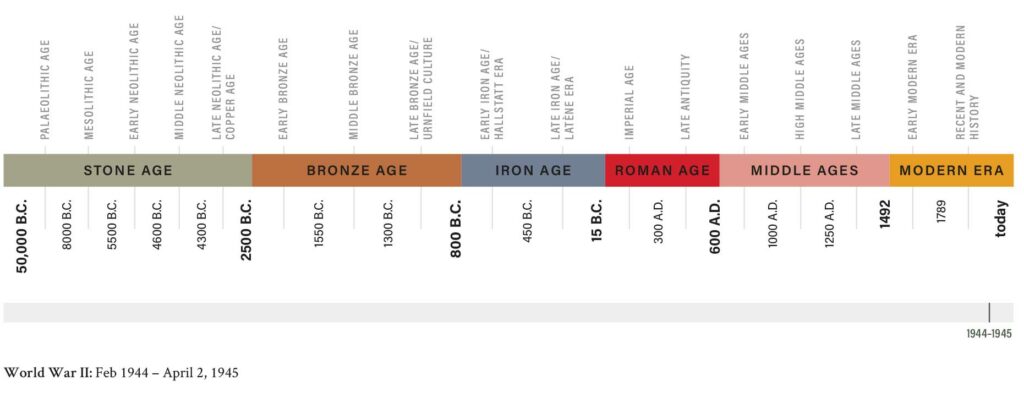
In Aflenz near Wagna, directly east of the Sulm river, there are caves in which the Leithakalk limestone was mined as early as the Roman imperial period. These underground quarries were adapted during the Second World War for the arms production of Steyr-Daimler-Puch AG. Prior to this, a branch of the Mauthausen concentration camp had been established in February 1944, housing prisoners who worked in the tunnels to prepare them for production. These so-called Roman caves are now a memorial site and can be visited on guided tours.
The establishment of the concentration camp
During World War II, the relocation of strategically important armaments production underground became necessary for Steyr-Daimler-Puch AG in Graz. The Roman limestone quarry near Aflenz was selected for this purpose, and concentration camp prisoners were to be deployed there. It is believed that the first transport of 201 prisoners from the Mauthausen concentration camp took place on February 8, 1944.
The camp was located on a meadow below the so-called Römerstein quarry. The entire area was a restricted zone and was bordered by the so-called guardhouse on the access road from Wagna. Between the guardhouse and the camp there was also a larger Arbeitsdienst camp, in which forced laborers were also interned. The tunnel system of the Römerstein quarry comprises several tunnels with numerous entrances and is accessible today in part by appointment.
The highest number of prisoners, 655, was recorded as early as July 1944. The majority of the prisoners came from the Soviet Union, Poland, Germany and Austria as well as from Yugoslavia. The severe working and living conditions and killings resulted in the verifiable deaths of at least 78 prisoners. The prisoners were used to excavate the quarry as well as for tunnel construction. After the production facilities in the tunnels were completed, the inmates had to work in the manufacture of aircraft and truck parts. The mortality rate was high, especially during the tunnel expansion. Initially, prisoners who died in the Aflenz subcamp were taken to the Mauthausen concentration camp or Graz for cremation, and later buried in a mass grave near the Aflenz subcamp.
The liquidation of the concentration camp subcamp took place on April 2, 1945. 467 prisoners from the camp in Aflenz-Leibnitz were transferred to Ebensee. Only 407 prisoners reached the Ebensee subcamp on April 18, 1945. Eight weak prisoners were shot during the march, 49 attempted to escape near Judenburg on April 6, but some were recaptured and shot.
Gedenken und Erinnern
After the war, the bodies were moved from the mass grave not far from the camp to the cemetery in Ehrenhausen. In 1989, a memorial plaque was erected near the tunnels. A memorial was also erected in front of the train station in Leibnitz. In 2009, the artists Helmut and Johanna Kandl redesigned the preserved guard house into a “memorial sign”. The former camp grounds are now used for agricultural purposes. The Mauthausen Committee Wagna/Leibnitz organizes an annual commemoration at the Roman quarry.
More information can be found here.
Text: Mag. Dr. Bernhard Schrettle

